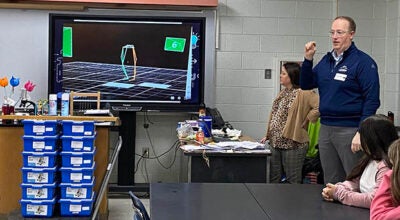Investment into agricultural bioeconomy
Published 11:00 am Thursday, August 18, 2022
|
Getting your Trinity Audio player ready...
|
The next generation of Virginia’s agricultural biodesigners are growing their own household items and supply-chain components.
Using mushroom mycelium as a binder, Matthew Reiss at Gnomestead Hollow Farm and Forage in Carroll County creates packing materials, insulation bricks, acoustical tiles, planter pots and more. His research and innovative manufacturing of sustainable materials with renewable agricultural byproducts speaks to an ever-expanding investment into the U.S. bioeconomy.
Tapping into the talent and resources of American agriculture to produce new, more sustainable inputs and products, a shift to an ag-based circular economy embraces more renewable biomass products and helps reduce waste.
The Ag Bioeconomy Coalition, founded by American Farm Bureau Federation and other leading industry associations, was launched to advance federal policy initiatives that can foster growth in the agriculture bioeconomy. The coalition serves as an ag bioeconomy forum and platform for industry stakeholders, advancing federal policy to foster growth in renewable, biobased materials used to make fuels, manufacturing materials and consumer goods.
Reiss has developed materials with multiple commodities and agricultural byproducts beyond mycelium, from hemp to soybean hulls, wheat straw and sawdust, according to a news release.
“Lignocellulose — woody plant material containing natural polymers — is one of the most abundant resources we’ve got on the planet, and it’s regenerative,” he said. “Where the future comes in, we will be streamlining the production of biomaterials while integrating digital fabrication technology to create them, like a 3D printer that can directly print mycelium!”
To sustain the momentum, resources are needed to enhance scalability of these projects. And making the technologies and infrastructure accessible is key, Reiss said, “especially to farmers who will hopefully be working with these materials, since they’re the ones generating them through agriculture.”
The U.S. Department of Agriculture estimates that the use of biobased products reduces greenhouse gas emissions by 12.7 million metric tons of carbon dioxide per year. The domestic biobased products industry adds over $470 billion of value to the U.S. economy and supports 4.6 million jobs.
“America’s farmers are leading the way when it comes to sustainable innovation, working to reduce our environmental impacts while feeding a growing population. But we can’t do it alone,” said AFBF President Zippy Duvall. “Partnerships are needed to help grow the ag bioeconomy, not just from agriculture but from a cross-section of industry, research, government and more. We look forward to exploring solutions that will help farmers do more with less as well as grow the rural economy.”




